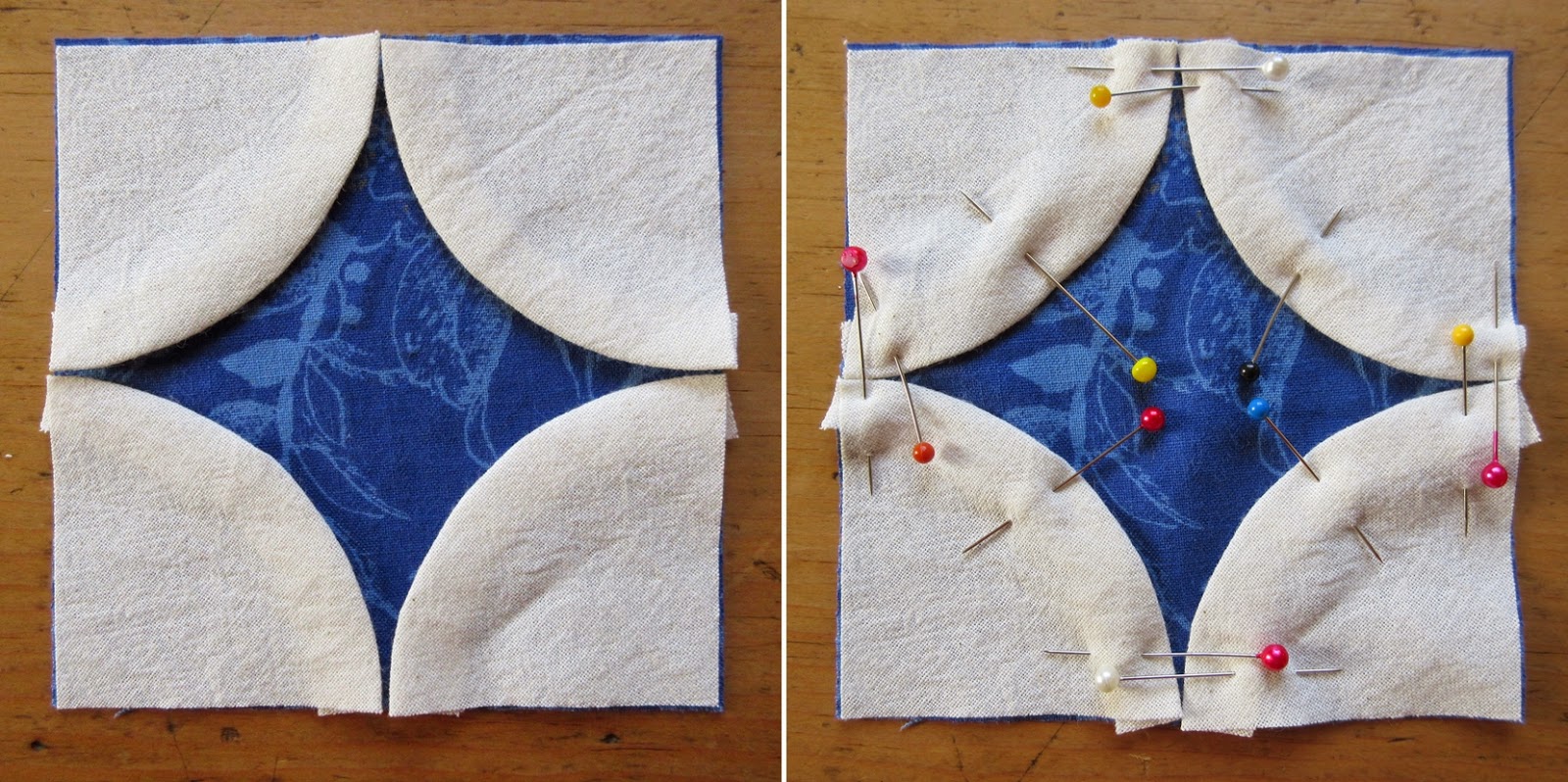Melody had lots of tips about binding at Flowerpatch Quilters last meeting and these are her measurements for cutting the strips.
- The length of binding you need will be the distance around your quilt + 9"
- For ¼ " single binding cut on the straight of grain - cut strips 1 ½ " wide.
- For ¼ " double layered binding - cut strips 2 ¼ " wide.
So armed with lots more info from Melody, this is me binding a double bed quilt. Due to having a limited amount of the fabric I want to use for the binding, I'm doing a single layer.
I cut all my strips across the fabric from selvage to selvage. With the back of a piece binding facing me I fold a corner down at 45 degrees and finger press. This marks my sewing line with a crease.
I lay this binding strip at right angles to another piece with right sides together, pin and sew along the crease.
I trim off the excess fabric and press the seam open. Repeat until you have one long length of binding.
I wind this on to a piece of cardboard and reward myself with a cup of tea and chocolate muffin!
Reinvigorated, I'm now ready to sew the binding on, but before I begin hadn't I better tack all around the quilt just near to what will be my sewing line? I think so - it will all go much better and quicker if I do and I hate unpicking! I don't trim the wadding and backing until the binding is sewn on.
I fold the beginning of the binding at 45 degrees and pin to the edge of the quilt. I think a good starting point is along the top edge near to the left corner.
I'm using my even feed (walking) foot on my machine with the lightest pressure. I sew until ¼ " from the corner and finish off with a few back stitches.
Here is my binding sewn on as far as the corner. I fold it back so that it's at right angles.
Then fold it down on itself so that the fold is level with the edge of the quilt. Pin and it's off again with the sewing machine.
Carry on like this around the quilt until you're at the beginning and sew the end of the binding over and passed where you started.
Phew! I think I need a glass of wine - or maybe even a little lie down!
Revived I trim off the wadding and backing, turn the binding to the back with a small hem and slip stitch into place by hand ....................................................and finally - Voila!
Corner front and back
and the join front and back.
It's not gone too badly and I hope Melody is proud of me, but I do wish I'd followed my own advice and done that tacking all the way around! :)
I have written a one page printer-friendly pdf with instructions and line drawings which you may find helpful.
This is the link
Binding a Quilt
Keep smiling - Anita
























